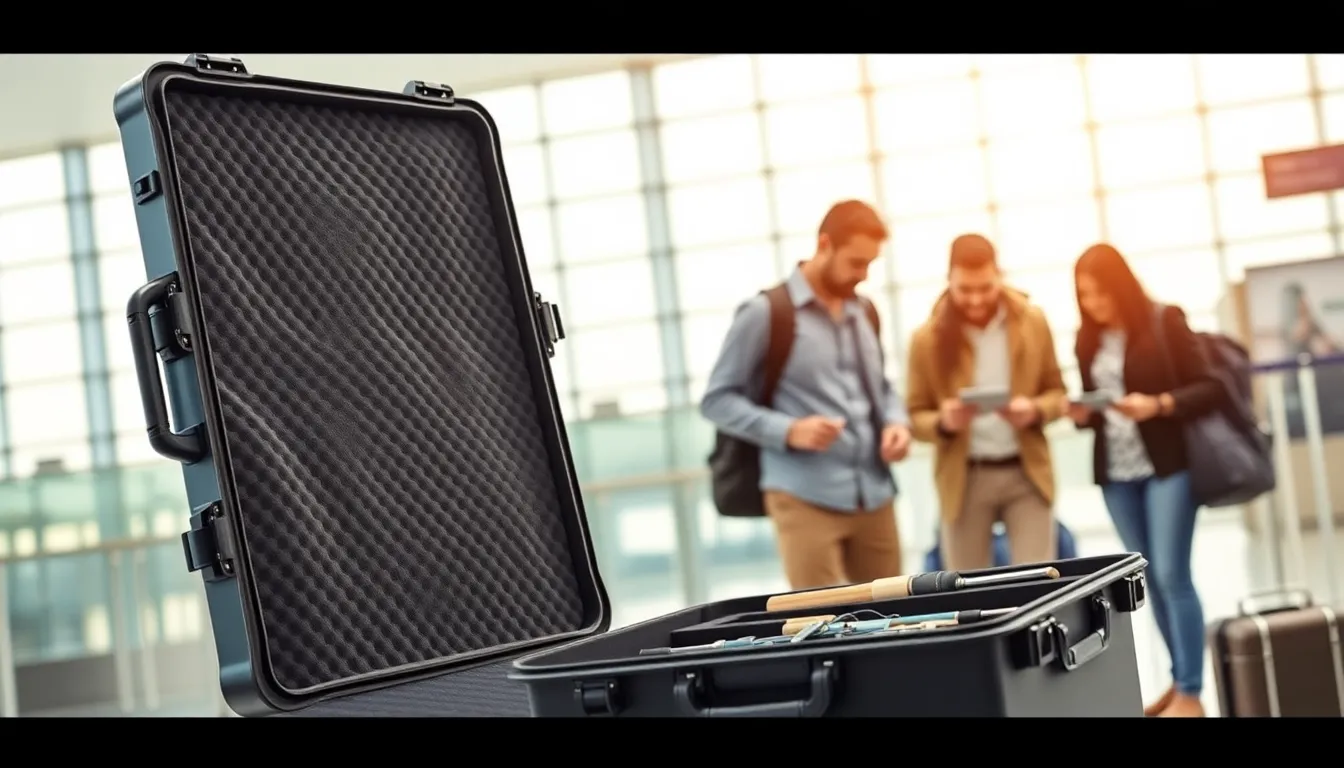Are you tired of arriving at your fishing destination only to find your prized rod in bits and pieces? If so, you’re not alone. Many anglers face this dilemma every time they attempt to fly with their gear. A good fishing rod case is not just a luxury: it’s a must-have. In this guide, we’ll explore the ins and outs of finding the perfect fishing rod case for air travel, so your fishing trips can focus on casting lines, not on dealing with damaged rods. Let’s immerse.
Table of Contents
ToggleUnderstanding the Importance of a Good Fishing Rod Case

When traveling by air, protecting your fishing gear becomes paramount. A high-quality fishing rod case offers more than just a snazzy enclosure: it acts as a shield against the rough handling of luggage. Airlines don’t exactly treat your baggage like it’s made of glass. Rods are often tossed, crammed, and dropped. This makes investing in a solid fishing rod case essential to ensure its longevity and performance.
Not only does a good case protect against physical damage, but it also keeps your fishing tools organized. Anyone who’s rummaged through a duffel bag to locate a rod tip will tell you the frustration that comes along with it. A well-designed case provides dedicated space for each component, minimizing the risk of losing pieces or tangling lines. In the world of fishing, every advantage counts, especially when you’re eager to reel in the big one.
Key Features to Look For in a Fishing Rod Case
When shopping for a fishing rod case, there are several key features to consider. First and foremost, durability is crucial. Look for materials like high-density foam or tough, waterproof fabrics that can withstand both weather and travel conditions.
Next, portability matters as well. Opt for cases with padded straps or handles, making it easy to carry through crowded airports. Weight is another factor to consider. Lightweight options can help you avoid excess baggage fees and lessen the strain on your arms.
Also, ensure that the case has adequate padding to absorb shock. You might also want to think about size: a case that’s too large may defeat the purpose of easy travel. Finally, check for extra compartments that allow for storage of other fishing essentials. You wouldn’t want to arrive at your destination without your favorite lures.
Types of Fishing Rod Cases Suitable for Air Travel
There are several types of fishing rod cases designed specifically for air travel. The most common types include:
Hard Cases
Hard cases are ideal for maximum protection. They’re constructed from rigid plastic or aluminum, ensuring that your rods remain unscathed during transit. But, they can be heavier and bulkier, so be prepared for some added weight.
Soft Cases
Soft cases offer more flexibility and are generally lighter. Made from durable nylon or polyester, they feature padding to help absorb impacts. While not as protective as hard cases, they’re easier to transport, making them a popular choice among traveling anglers.
Combination Cases
Some options combine the benefits of both hard and soft cases. These might include a hard outer shell with soft internal padding. This way, you get the best of both worlds: protection and portability. They are also often equipped with wheels for easier transport in airports.
Tips for Packing Fishing Rods for Air Travel
Packing your fishing rods effectively can make all the difference in ensuring they arrive intact. Start by disassembling your rod, this reduces its length and makes it easier to fit into the case. Place the rod sections in a protective tube or use soft fabric to prevent friction during travel.
Next, fill any extra space in the case with soft items like clothing or towels. This not only adds cushioning but also helps absorb any shocks from impacts. Be sure to secure any spinning reels to prevent them from wandering during transit.
Finally, label your case clearly with your contact information. Airlines seldom mingle their baggage departments with a personal touch, and having your name on your case can help avoid losses.
Airline Regulations and Baggage Policies
Different airlines have varying policies about fishing rod cases, so it’s essential to do your assignments before flying. Generally, most airlines categorize fishing rods as sporting equipment, which usually falls under special baggage rules. Be aware that oversized or overweight fees could apply, especially if your case exceeds standard dimensions.
Some airlines allow rods in soft cases as part of the regular baggage allowance, while others may require an additional fee. It’s best to check the airline’s official website for specific requirements related to dimensions and weight limits. To further simplify the process, some airlines provide instructions on handling fragile sporting equipment, so look out for any tips they may offer.
